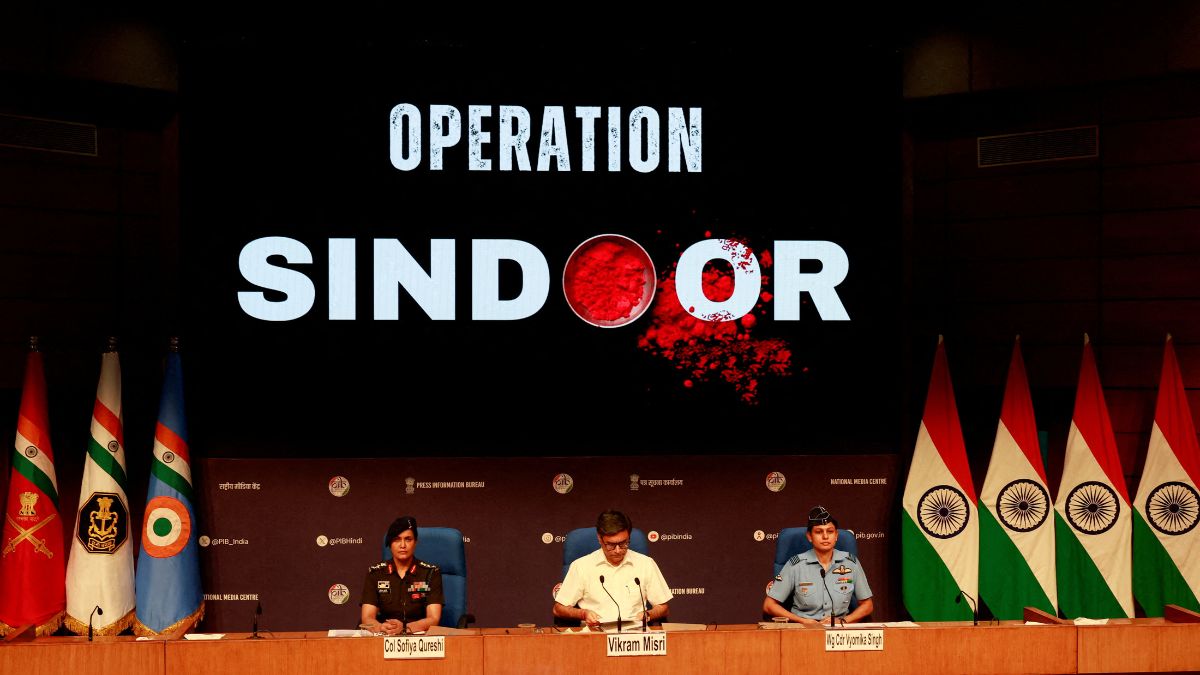In the early hours of Wednesday (May 7, 2025), India launched Operation Sindoor, its most expansive cross-border military operation since the 2019 Balakot airstrikes.
Conducted in response to the April 22 Pahalgam terror attack that killed 26 civilians, the mission targeted terror infrastructure across Pakistan and Pakistan-occupied Kashmir (PoK).
Notably, the operation showcased India’s growing precision-strike capabilities, prominently featuring the SCALP cruise missile, the HAMMER precision-guided bomb, and loitering munitions.
These high-precision weapons — some of the most advanced in India’s arsenal — highlight the country’s shift toward long-range, low-collateral strikes in counter-terrorism operations.
All about SCALP cruise missiles
The SCALP (Système de Croisière Autonome à Longue Portée) missile — also known as Storm Shadow in the UK — is a long-range, air-launched cruise missile developed jointly by MBDA France and the UK.
It is designed to penetrate deep into enemy territory and deliver precision strikes against high-value, well-defended targets.
Key features:
Range: Over 500 km.
Warhead: BROACH multi-effect, capable of penetrating hardened targets like bunkers and underground facilities.
Navigation: GPS/INS guidance with terrain referencing and target recognition, enabling extreme accuracy.
Launch platform: India integrates SCALP with the Rafale fighter jets, which are currently operated by the Indian Air Force.
SCALP missiles were used extensively by the UK and France in conflicts including Libya (2011) and Syria (2018). They are known known for their effectiveness in neutralising strategic targets with minimal collateral damage.
In Operation Sindoor, SCALP missiles were reportedly launched from Indian Rafale jets to strike deep-terror infrastructure in Pakistan and PoK. Their use allowed Indian forces to hit targets well beyond the Line of Control (LoC) while minimising the risk to pilots and aircraft.
This marks the first publicly acknowledged use of SCALP missiles in an operational setting by India.
All about HAMMER bombs
HAMMER (Highly Agile Modular Munition Extended Range), or Armement Air-Sol Modulable (AASM), is a precision-guided bomb developed by France’s Safran Electronics & Defense.
It combines conventional bombs with GPS, INS and infrared/semi-active laser guidance kits.
Key features:
Range: 15–70 km depending on variant and altitude of release.
Modularity: Can be fitted with 125 kg, 250 kg, 500 kg or 1000 kg bombs.
Guidance: GPS/INS as baseline, with optional infrared or laser homing for terminal accuracy.
Launch platform: Also integrated into the Rafale aircraft.
The HAMMER bombs have been proven in French air operations in Afghanistan, Mali and West Asia. They are known for high accuracy in urban or mountainous terrain.
According to defence sources, HAMMER bombs were deployed for mid-range targets where collateral damage risk was high.
The bombs allowed Indian pilots to strike precisely, even in challenging terrain like valleys and urban-adjacent areas in PoK.
India had acquired HAMMER bombs in emergency deals in 2020 to arm Rafale jets during the Ladakh border tensions.
What are loitering munitions?
Loitering munitions, also called kamikaze drones, are UAVs designed to hover over a target area before striking. These munitions provide a real-time strike capability with flexibility to abort or redirect after launch.
Key features:
Autonomous target selection (in some variants) or operator-controlled strike.
Endurance: Typically 30 minutes to 2 hours.
Precision: Can hit moving or hidden targets with high accuracy.
Stealth: Small size and low radar signature.
India has procured various loitering munitions, including the IAI Harop from Israel and indigenous variants like ALS-50 from Tata Advanced Systems.
Loitering munitions were reportedly used to destroy small, high-value, time-sensitive targets— such as moving vehicles, temporary safe houses or command posts. These systems provided real-time battlefield flexibility and reduced the need for follow-up strikes.
What message does use of these weapons send
The deployment of SCALP, HAMMER and loitering munitions in Operation Sindoor reflects a tactical evolution in Indian military doctrine. Rather than large-scale bombing or conventional troop engagements, the focus is now on precision strikes with minimal collateral damage, stand-off capabilities while keeping assets outside enemy air defence zones and layered strike options for fixed, mobile and fortified targets.
The Indian Ministry of Defence reiterated this in a press release, saying, “Our actions have been focused, measured and non-escalatory in nature. No Pakistani military facilities have been targeted. India has demonstrated considerable restraint in selection of targets and method of execution.”
Also Watch:
These weapons give India the ability to deliver quick, targeted responses that are legally defensible, politically calibrated and militarily effective.
The combination of deep-strike and tactical weapons allows the Indian military to retaliate swiftly and effectively against terror threats while keeping escalation in check.
With inputs from agencies


)
)
)
)
)
)
)
)
)